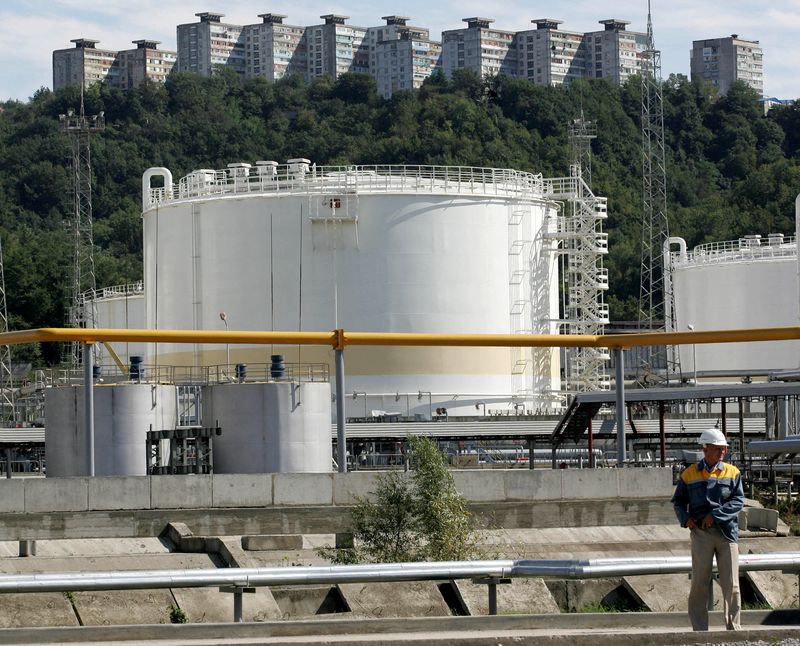This week has seen a slight decrease in geopolitical risk premiums in the oil market, following significant increases in both Brent implied volatility and call options implied volatility skew the previous week, according to Goldman Sachs. The oil market remains sensitive to developments in the ongoing Middle East conflict, which continues to weigh on traders’ decisions amidst mixed signals regarding global demand prospects. Currently, Brent crude futures are trading at $77.72 a barrel, reflecting a modest increase of 0.7% as of 0612 GMT. Despite the recent uptick, prices experienced a notable decline of over 4% in the prior session, primarily due to expectations surrounding a potential ceasefire between Hezbollah and Israel.
Goldman Sachs has projected that a significant disruption in Iranian oil production could yield a peak upside of $10 to $20 per barrel for Brent crude. However, the bank also suggests that, barring any major surprises in supply disruptions, oil prices are likely to stabilize at or around current levels for the upcoming quarter. The dynamics in the market illustrate a tug-of-war between geopolitical risks and prevailing bearish sentiments regarding demand, as traders assess the impact of the regional conflict while also factoring in overall economic indicators contributing to oil consumption patterns.
In terms of market metrics, the recent surge in call options implied volatility and Brent implied volatility indicates a heightened perception of risk among traders. Specifically, the call options implied volatility skew reached levels similar to mid-April marks last week, while Brent implied volatility surpassed its model-implied fair value for the first time this year, suggesting a divergence in expectations for future price movements. This uptick in volatility points to the market’s anticipation of potential shifts in the geopolitical landscape that could impact oil supply and prices significantly.
Goldman Sachs’ analysis utilizes implied volatility as a crucial measure to gauge the probability of substantial price fluctuations. The bank highlighted that options markets are currently pricing in approximately a 5% likelihood of a $20 per barrel price surge, which they estimate could correspond to a disruption in oil supply of about 2 million barrels per day occurring within a six-month timeframe, without any intervention from OPEC. This perspective on future oil prices reflects a careful balancing act within the markets, as traders navigate both speculative opportunities and real-world supply chain vulnerabilities.
Despite this focus on volatility and potential disruptions, the overall sentiment in the markets remains tempered by bearish demand forecasts, prompting traders to consider how the interplay between geopolitical tensions and economic fundamentals will shape oil prices in the near term. The uncertain trajectory of the Middle East conflict, combined with existing concerns about global oil demand, keeps the market participants vigilant as they respond to new developments that could influence prevailing sentiments or create abrupt shifts in pricing dynamics.
As the week progresses, the ongoing analysis from financial institutions like Goldman Sachs will remain critical in shaping market expectations. The discussions surrounding Brent crude pricing and the broader oil market landscape illustrate a deeply interconnected web of factors influencing supply and demand. Ultimately, how geopolitical events unfold will play a significant role in determining future price movements, as traders continue to assess both immediate risks and longer-term implications for oil demand and overall market stability.

